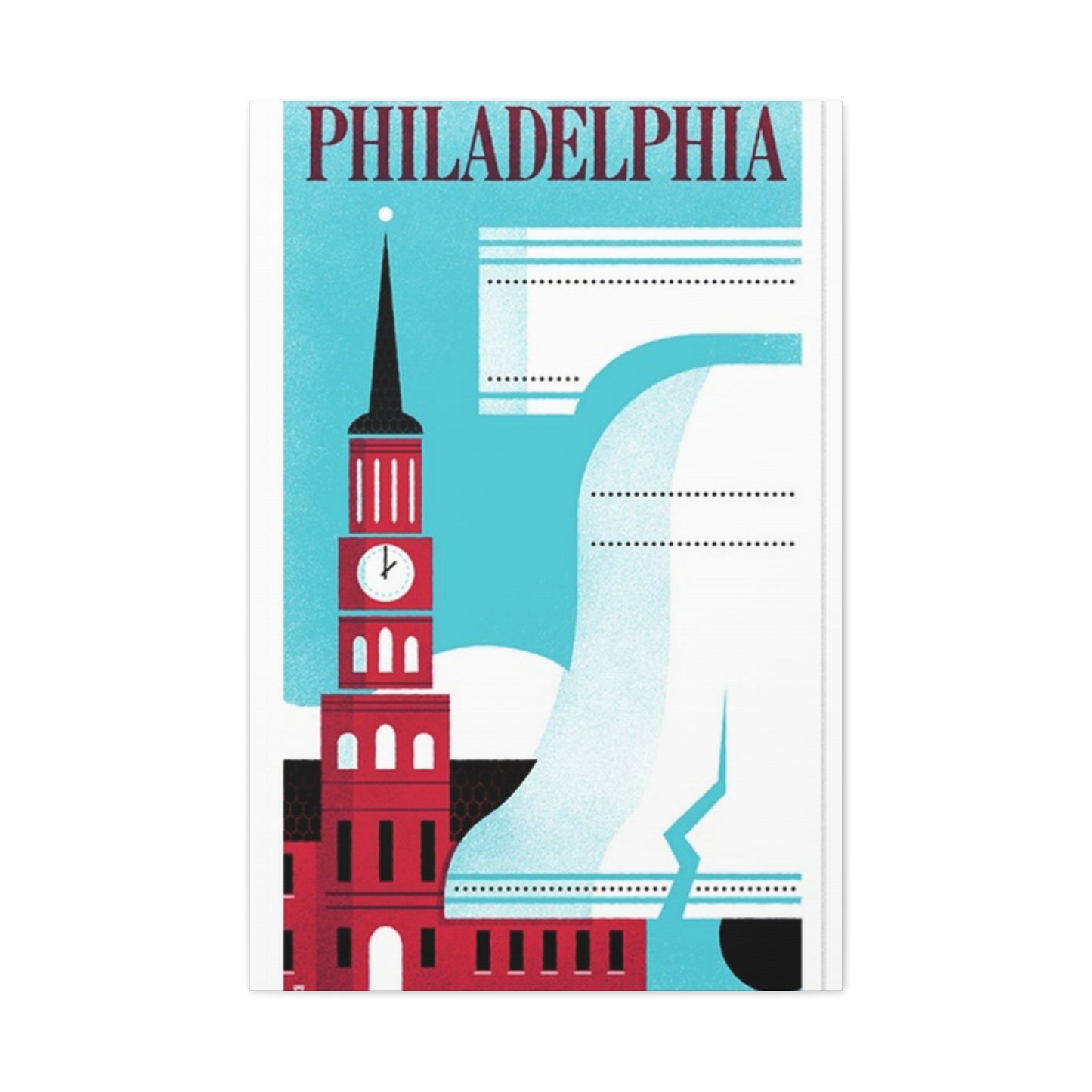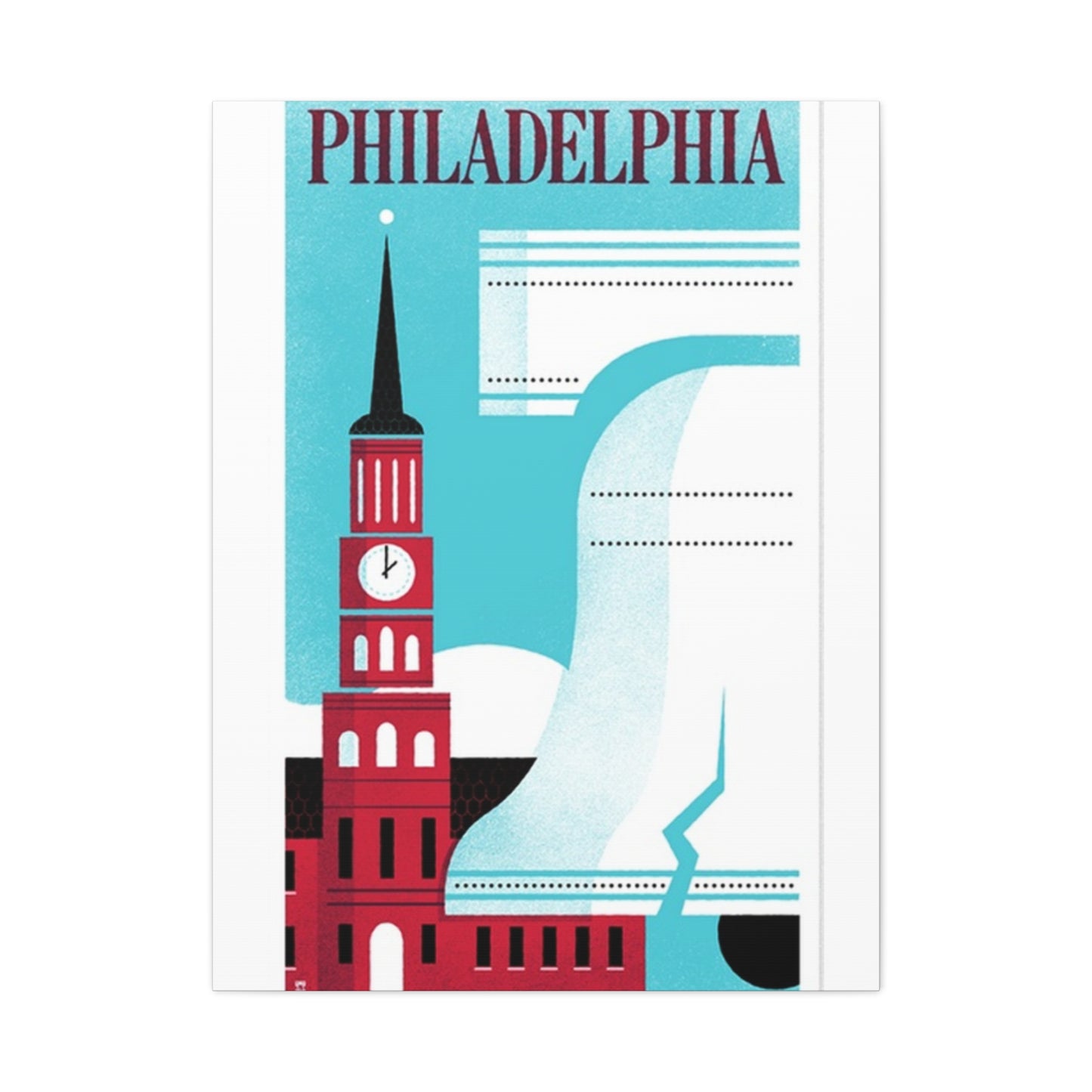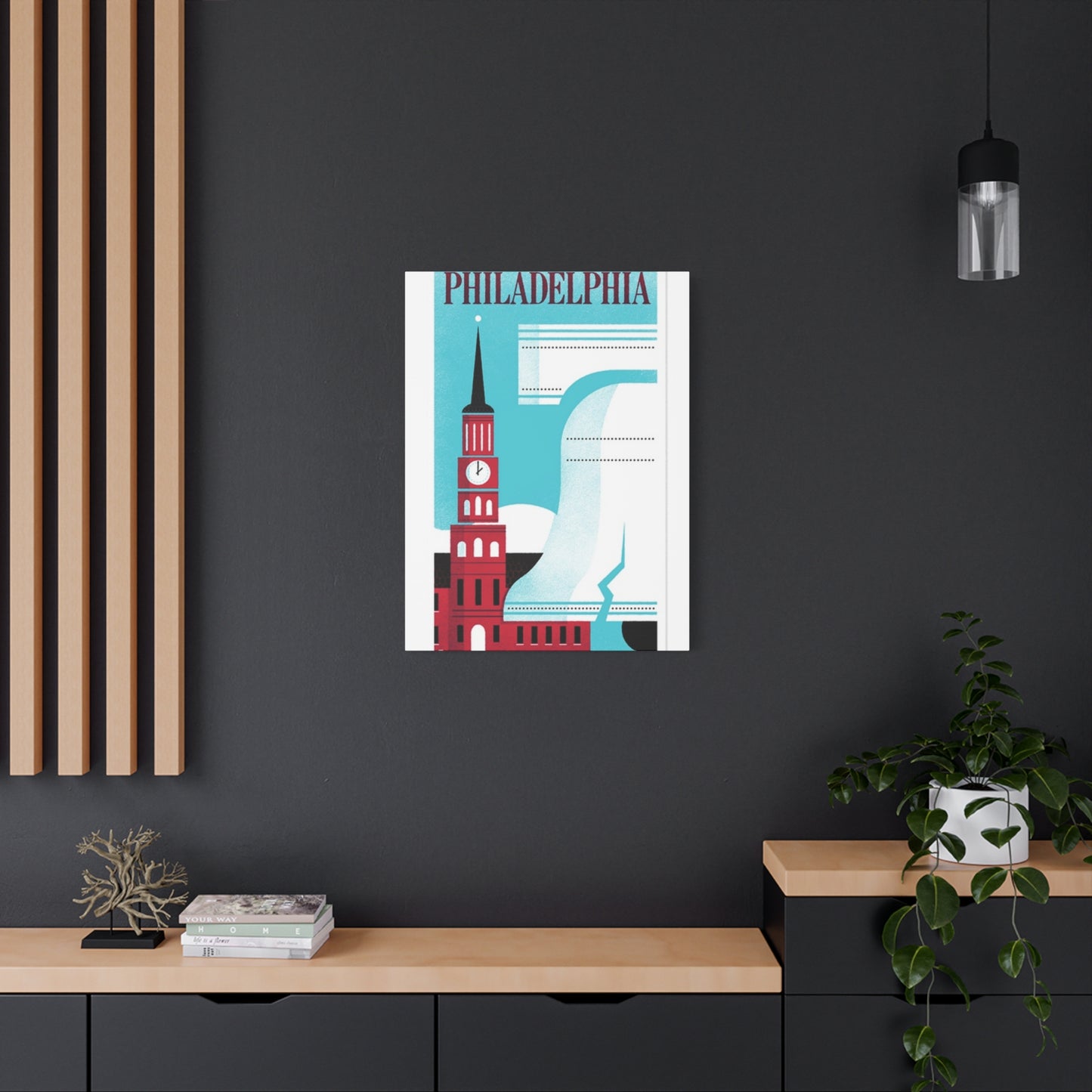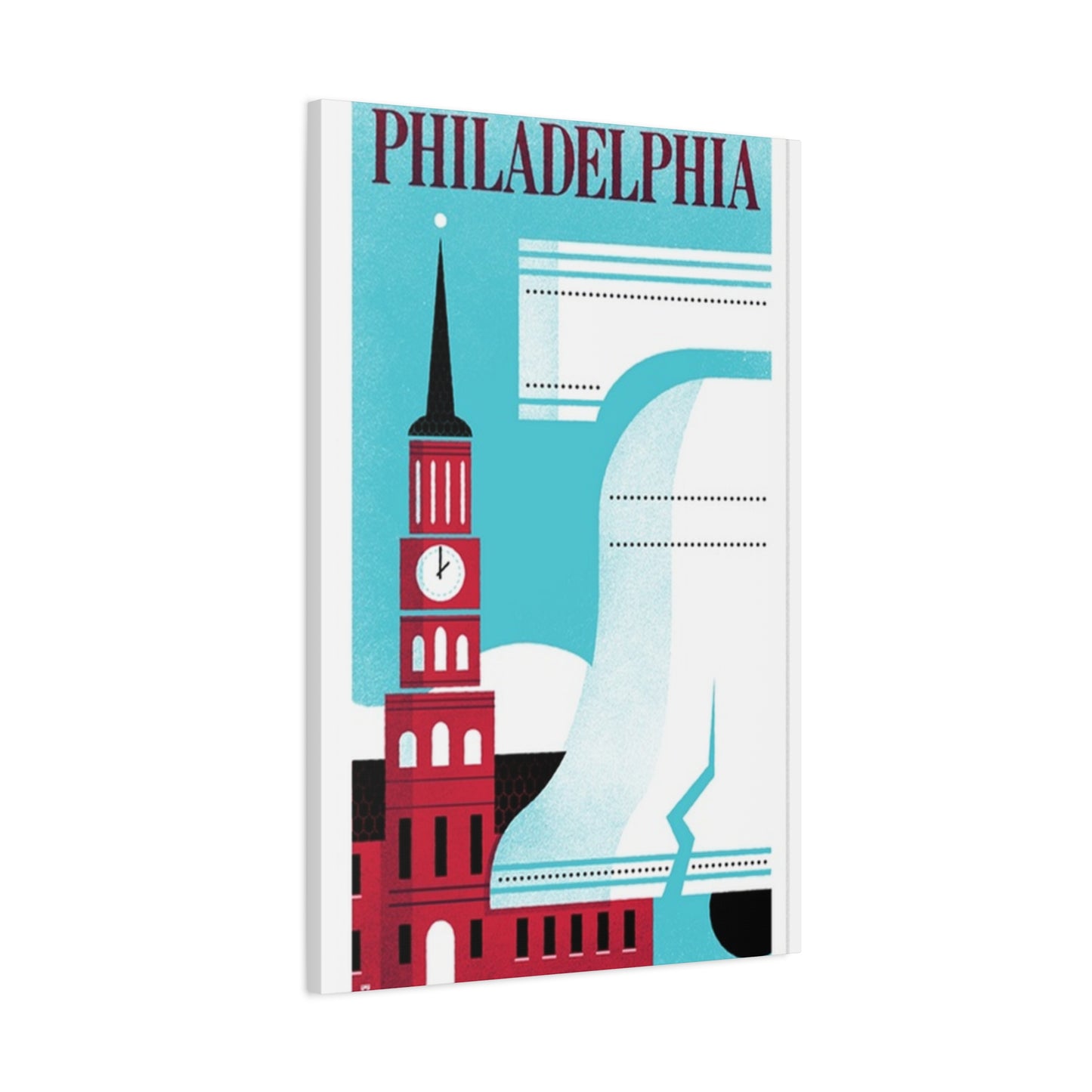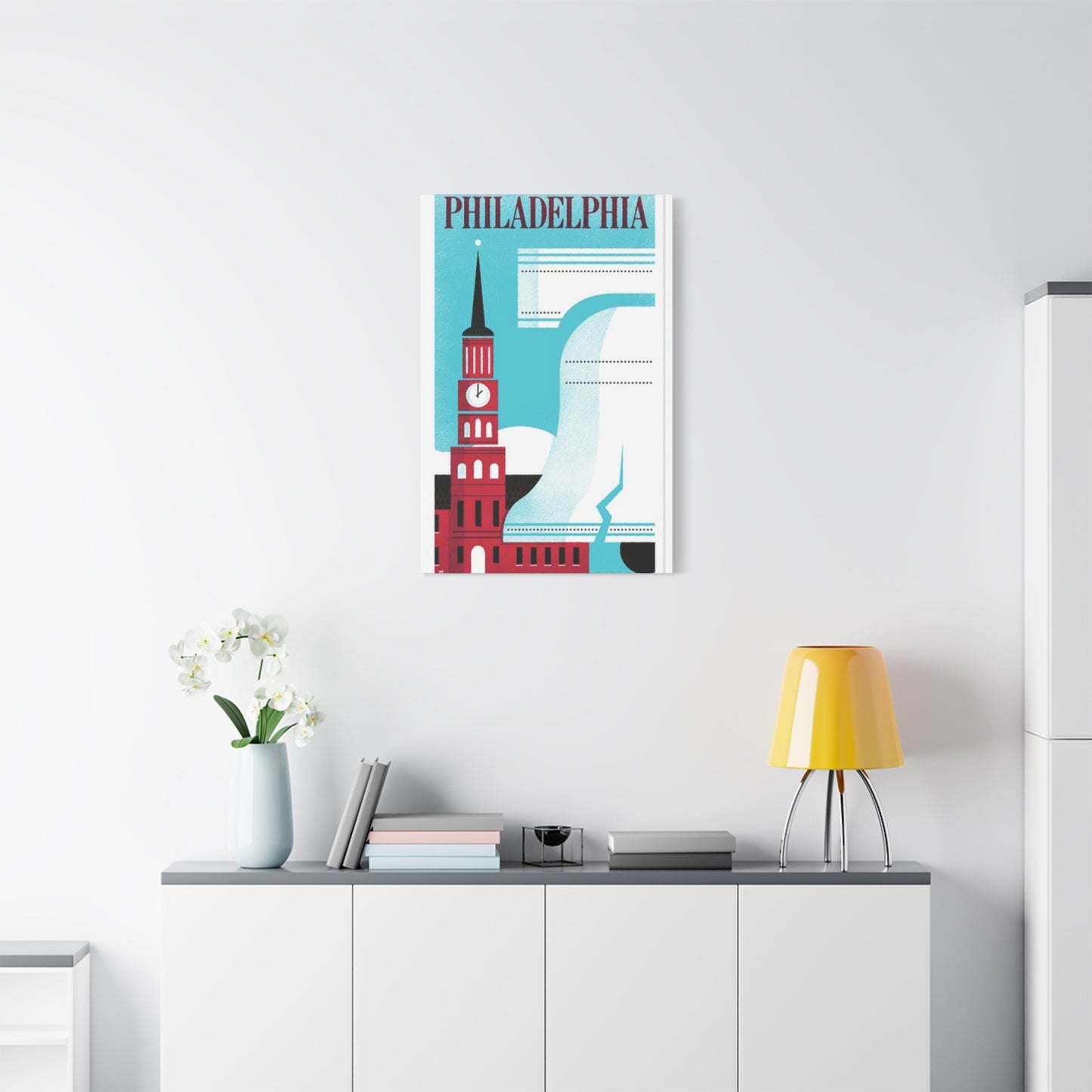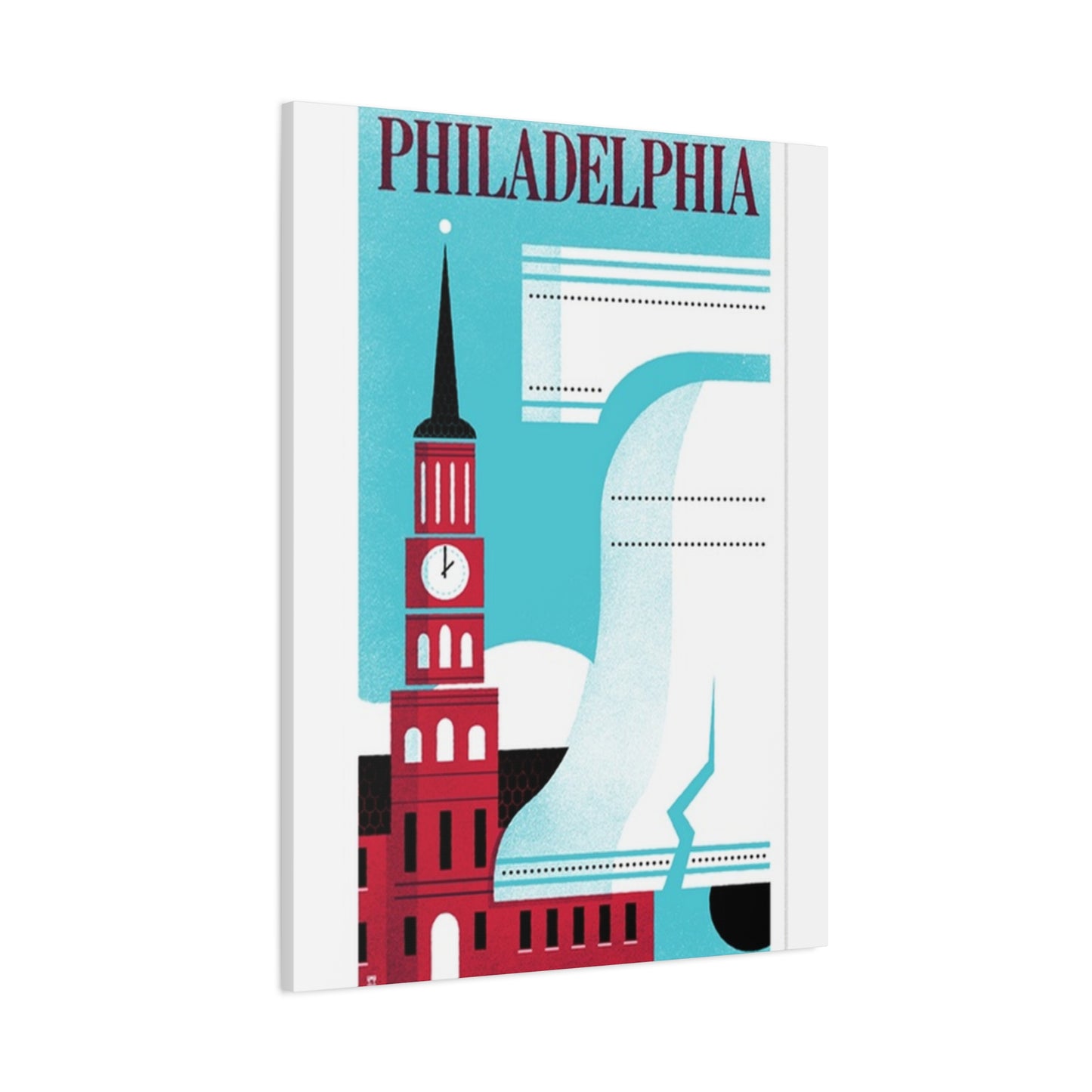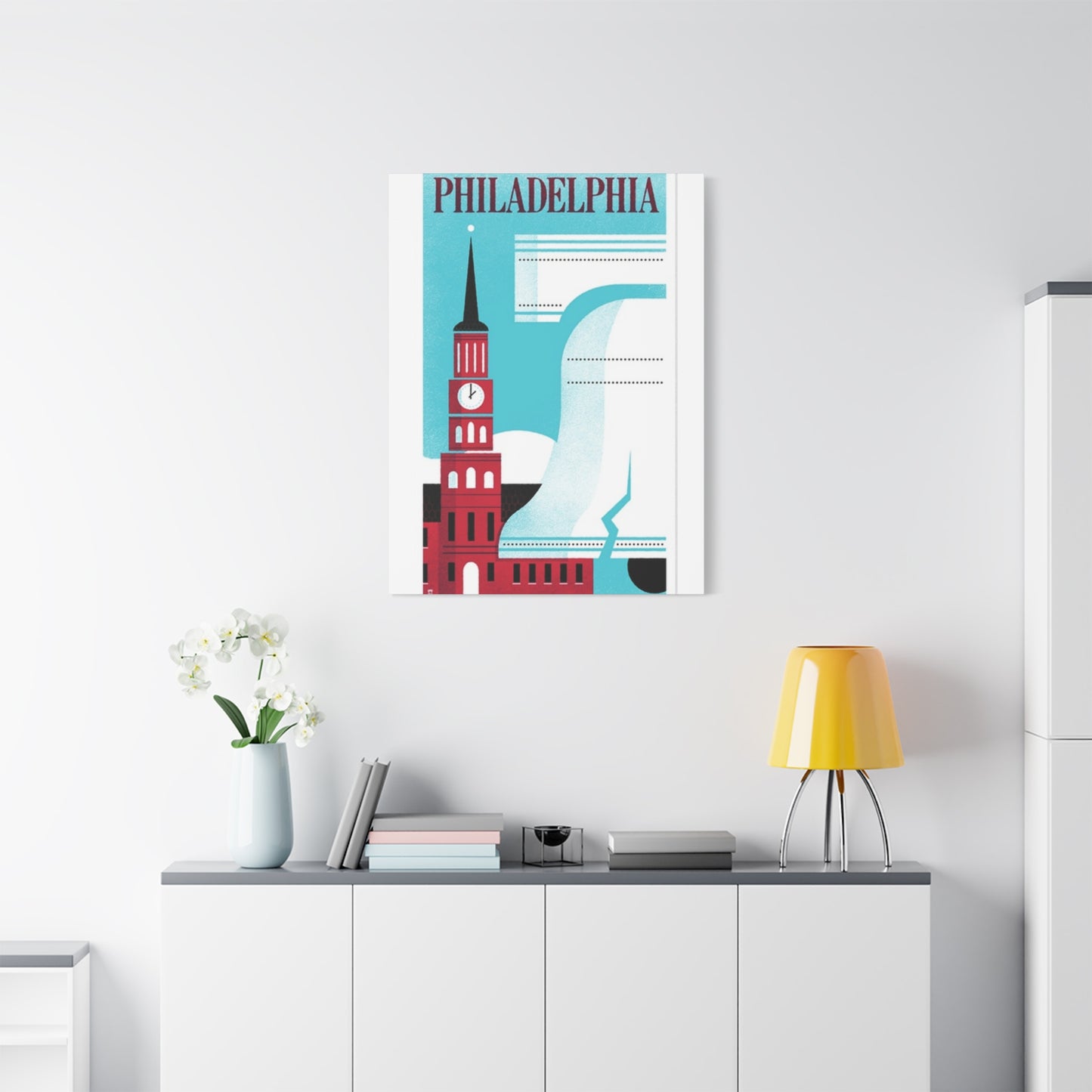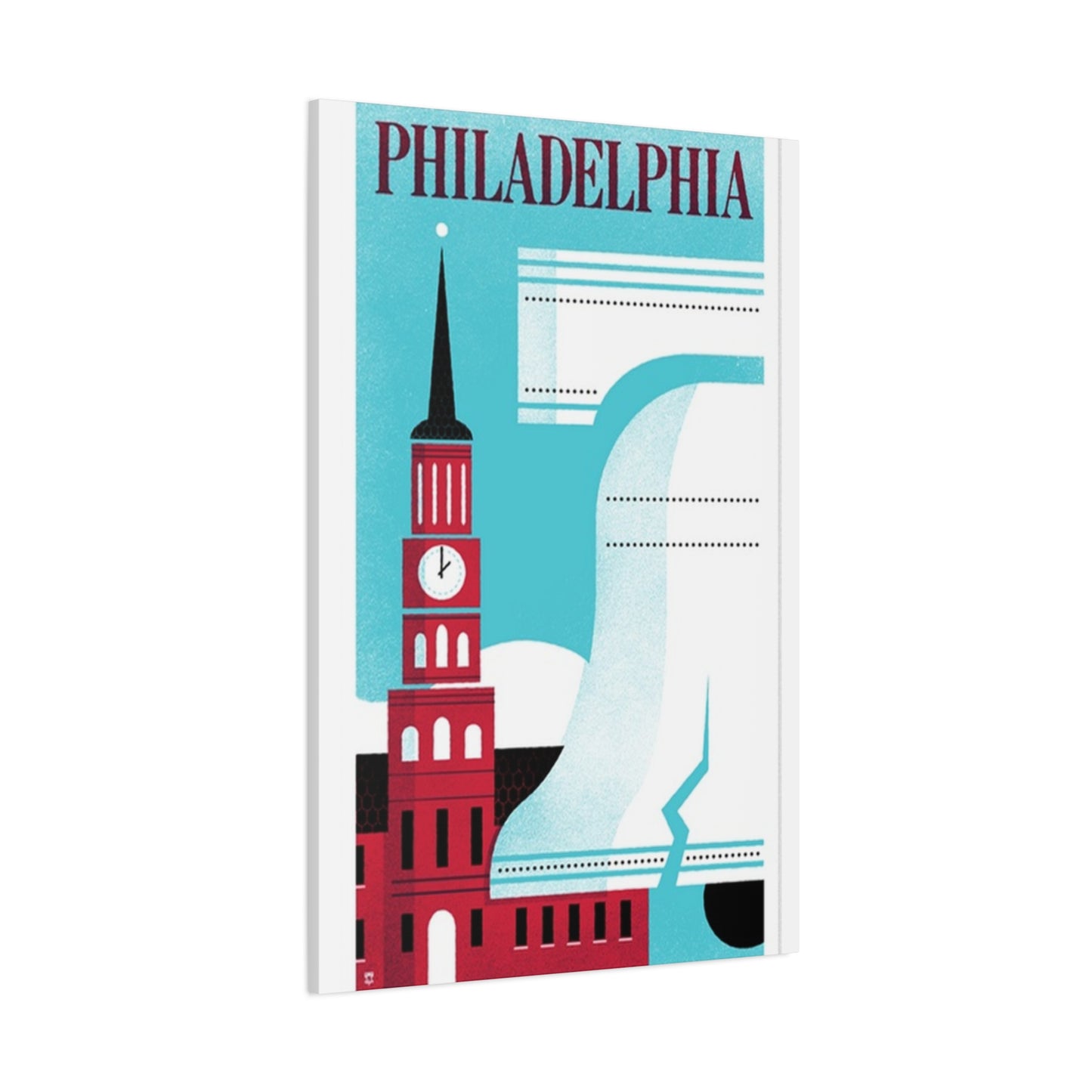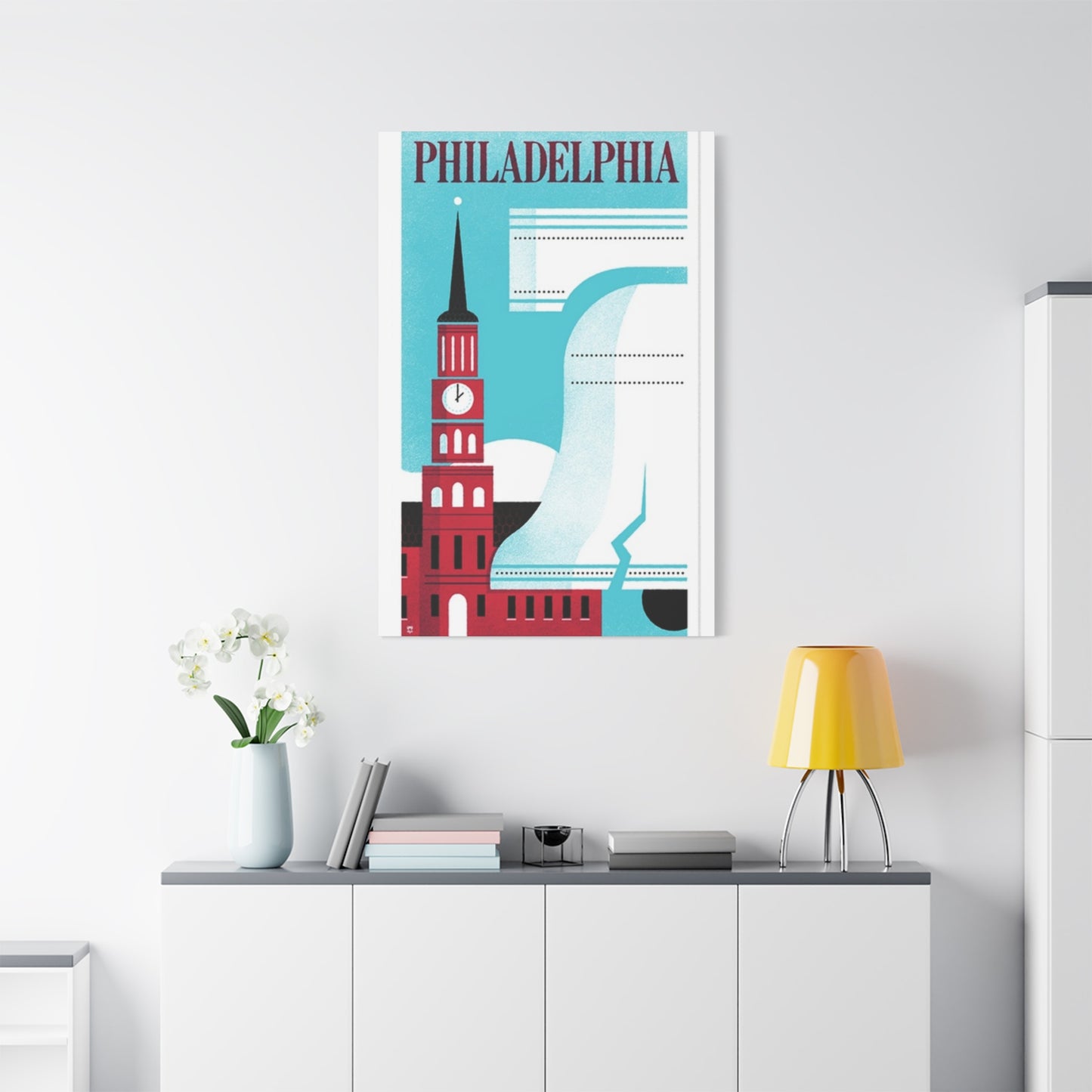Breathless City Philadelphia Wall Art: Capturing the Heartbeat of the City
Philadelphia stands as one of America's most emotionally complex cities, where every street corner whispers tales of triumph and tribulation. This remarkable metropolis weaves together threads of hope and hardship, creating a tapestry that captures the authentic American experience. From its revolutionary beginnings to its modern-day renaissance, Philadelphia embodies a unique duality that speaks to the human condition in profound ways.
The city's character emerges not from perfection, but from its willingness to embrace both light and shadow. Philadelphia's neighborhoods each tell distinct stories, painted across brick walls and carved into cobblestone streets. The murals that adorn building sides serve as windows into the collective soul of a community that refuses to surrender its dreams despite facing considerable challenges.
Walking through Philadelphia means encountering layers of history that continue to shape contemporary life. The Liberty Bell's crack serves as a metaphor for the city itself - flawed yet still capable of producing beautiful sounds. This imperfection creates space for genuine human connection and authentic artistic expression that resonates far beyond the city limits.
Philadelphia's emotional landscape reveals itself through countless small moments: elderly residents sharing stories on stoops, children playing in pocket parks carved from vacant lots, artists transforming abandoned buildings into community centers. These scenes capture the essence of a city that finds extraordinary beauty in ordinary circumstances.
The relationship between Philadelphia's residents and their city runs deeper than mere geographical connection. It represents a covenant between people and place, where mutual loyalty creates something greater than the sum of its parts. This bond manifests in the fierce pride residents feel for their neighborhoods, their sports teams, and their shared identity as Philadelphians.
Embracing Contradictions in the City of Neighborhoods
Philadelphia's identity centers on its ability to hold contradictions without resolution. The same streets that witnessed revolutionary fervor now host block parties where neighbors celebrate their shared humanity. Historic districts blend seamlessly with contemporary developments, creating urban environments that honor the past while embracing the future.
This complexity extends to the economic realities facing different neighborhoods. Areas experiencing significant investment exist alongside communities struggling with disinvestment, yet both contribute to Philadelphia's authentic character. The city's honesty about these disparities allows for genuine conversations about improvement and change.
The neighborhoods themselves serve as distinct villages within the larger metropolitan area. Northern Liberties pulses with creative energy as young professionals and artists establish studios and cafes. South Philadelphia maintains its strong Italian-American roots while welcoming new immigrant communities who add their own cultural flavors to the mix. West Philadelphia showcases academic excellence through its proximity to major universities while supporting vibrant local businesses that serve longtime residents.
Each neighborhood develops its own rhythm and personality, yet all share common threads that unite them as unmistakably Philadelphia. The row houses that define much of the city's architecture create intimate streetscapes where neighbors naturally interact. Corner stores serve as informal community centers where relationships develop over daily interactions.
These micro-communities within the larger city structure allow residents to maintain strong local identities while participating in the broader Philadelphia experience. The neighborhood festivals, community gardens, and local sports leagues that flourish throughout the city demonstrate how grassroots organization can create meaningful change at the human scale.
Philadelphia's neighborhood diversity means that experiences can vary dramatically within relatively short distances. A walk from Center City to any surrounding area reveals shifting demographics, architectural styles, and commercial districts that reflect different waves of settlement and development. This variety keeps the city interesting and provides opportunities for cultural exchange and mutual learning.
The challenge and opportunity of Philadelphia's neighborhood structure lies in ensuring that all areas receive appropriate investment and attention. When this balance works well, the result is a city where different communities can thrive while maintaining their distinct characters. When it fails, disparities become entrenched and difficult to address.
Artistic Expression Capturing Urban Authenticity
Philadelphia's art scene reflects the city's complex emotional reality through various mediums that speak directly to lived experience. The mural arts program that began as a response to graffiti has evolved into one of the world's most significant public art initiatives, transforming entire city blocks into outdoor galleries that celebrate community stories and aspirations.
These large-scale murals do more than decorate buildings; they serve as community gathering points and sources of neighborhood pride. Local residents often participate in their creation, ensuring that the finished works authentically represent their experiences and hopes. The collaborative process builds relationships between artists and community members, creating ongoing connections that extend far beyond the completion of individual projects.
Street art and murals in Philadelphia address themes ranging from social justice and community healing to celebrations of local history and cultural heritage. The diversity of artistic voices ensures that multiple perspectives receive representation, creating visual dialogues that reflect the city's demographic complexity. These public artworks make sophisticated artistic expression accessible to all residents, regardless of their economic circumstances or formal education levels.
The city's galleries and studios provide additional platforms for artistic expression that explores Philadelphia's unique character. Local artists draw inspiration from their surroundings, creating works that capture both the beauty and the struggles inherent in urban life. Photography exhibitions document changing neighborhoods, while painting series explore the emotional resonance of familiar city spaces.
Music venues throughout Philadelphia support artists who perform everything from hip-hop and punk rock to folk and classical music. These spaces become community gathering points where artistic expression and social connection intersect. The diversity of musical genres reflects the city's cultural complexity while providing platforms for local artists to develop their craft and build audiences.
Performance art and theater in Philadelphia often address directly political and social issues facing the community. These works create opportunities for public dialogue about difficult topics while providing emotional outlets for both performers and audiences. The accessibility of many of these performances ensures that artistic expression remains connected to community concerns rather than becoming isolated from daily life.
The relationship between Philadelphia's artists and their city involves mutual influence and inspiration. Artists draw material from their urban environment while simultaneously working to improve that environment through their creative contributions. This reciprocal relationship creates a dynamic cultural scene that continues evolving in response to changing circumstances and opportunities.
Historical Narratives Embedded in Modern Streets
Philadelphia's streets function as living history books where past and present converge in fascinating ways. Cobblestone alleys that once witnessed colonial merchants now host contemporary artists and entrepreneurs who draw inspiration from their surroundings' historical significance. The physical infrastructure of the city carries forward stories that continue shaping contemporary experiences and identity.
Independence Hall and the Liberty Bell represent obvious historical landmarks, but Philadelphia's deeper historical narrative emerges through less famous locations that played crucial roles in American development. The houses where abolitionists provided sanctuary, the corners where labor organizers gathered, and the buildings where immigrants first established communities all contribute to the city's layered historical significance.
Walking tours reveal how historical events continue influencing contemporary neighborhood dynamics. Areas that served as entry points for different immigrant groups maintain cultural characteristics that reflect their historical populations while adapting to current demographic changes. This continuity creates neighborhoods with distinct personalities that honor their origins while remaining vibrant and relevant.
The preservation efforts throughout Philadelphia demonstrate how historical awareness can enhance rather than constrain contemporary development. Adaptive reuse projects transform historical buildings into modern residential and commercial spaces while maintaining architectural features that connect current users to previous generations. These projects prove that respecting history and embracing innovation can work together productively.
Street names throughout Philadelphia tell stories of the figures and events that shaped the city's development. These daily reminders of historical significance create opportunities for residents to connect with their community's past while navigating their present circumstances. Schools and community organizations use these embedded historical references as starting points for educational programs that bring local history to life for young people.
The Underground Railroad routes that passed through Philadelphia remain marked and remembered, serving as reminders of the city's role in struggles for freedom and justice. These historical connections provide context for contemporary social justice efforts while honoring the courage of previous generations who worked for positive change. The continuity between past and present activism demonstrates how historical awareness can inform contemporary action.
Archaeological discoveries throughout Philadelphia continue revealing new information about the city's development and the daily lives of previous residents. These findings add depth to historical narratives while creating opportunities for community members to participate in uncovering their local history. Public programs allow residents to engage directly with archaeological work, building personal connections to their neighborhood's historical development.
Discovering Beauty Within Urban Challenges
Philadelphia's aesthetic appeal emerges not despite its challenges but because of how the city and its residents respond to difficulties with creativity and determination. The contrast between elegant historical architecture and contemporary struggle creates visual narratives that speak to resilience and hope in the face of adversity.
Row house architecture that defines much of Philadelphia creates intimate streetscapes where small details become significant. Window boxes bursting with flowers, carefully maintained stoops, and personalized doorways demonstrate how residents express pride and creativity within modest circumstances. These individual touches accumulate to create neighborhood characters that feel both cohesive and personally meaningful.
The play of light and shadow across Philadelphia's varied architectural landscape creates constantly changing visual experiences throughout the day. Morning light filtering through tree-lined streets illuminates brick facades in warm tones that emphasize texture and craftsmanship. Evening shadows cast by row houses create dramatic contrasts that highlight the geometric patterns created by repetitive architectural elements.
Vacant lots throughout the city present challenges that communities transform into opportunities for creative expression and practical improvement. Community gardens flourish in spaces that were once eyesores, providing fresh food for residents while creating gathering places that strengthen neighborhood bonds. Art installations in empty lots spark conversations about possibility and renewal while adding beauty to areas that need visual enhancement.
The industrial heritage visible throughout Philadelphia contributes to the city's distinctive aesthetic character. Converted warehouses and former manufacturing buildings provide unique architectural elements that create interesting contrasts with residential neighborhoods. These structures remind viewers of the city's working-class roots while demonstrating how industrial spaces can adapt to contemporary uses.
Seasonal changes in Philadelphia reveal different aspects of the city's beauty throughout the year. Spring brings blossoming trees that soften urban hardscapes, while autumn leaves add warm colors to brick and stone streetscapes. Winter snow creates temporary transformations that highlight architectural details and change the visual relationships between buildings and spaces.
The relationship between natural and built environments in Philadelphia creates opportunities for unexpected beauty in urban settings. Mature trees lining residential streets provide canopies that filter harsh sunlight and add organic shapes to geometric streetscapes. Small parks and pocket gardens introduce green spaces that serve as visual and emotional respites within dense urban neighborhoods.
Community Stories Shaping Neighborhood Identity
Every Philadelphia neighborhood contains countless personal stories that combine to create collective identity and shared purpose. These individual narratives, passed down through generations or created through recent experiences, form the foundation for community pride and mutual support that characterizes the city's strongest areas.
Long-term residents serve as living repositories of neighborhood memory, sharing stories about how areas have changed over decades while maintaining essential character traits that define local identity. Their accounts of previous businesses, community leaders, and significant events provide context that helps newer residents understand and appreciate their surroundings more deeply.
Recent arrivals contribute their own stories and perspectives that add new layers to existing neighborhood narratives. The integration of different cultural backgrounds, professional experiences, and personal histories creates dynamic communities that honor their past while remaining open to growth and change. This balance between continuity and evolution keeps neighborhoods vital and relevant.
Community organizations throughout Philadelphia facilitate the sharing of personal stories through oral history projects, neighborhood festivals, and intergenerational programming that connects residents across age groups. These initiatives help preserve important community knowledge while creating opportunities for relationship building that strengthens social cohesion.
Local businesses often serve as centers for story sharing and community connection. Corner stores, barbershops, beauty salons, and restaurants become informal gathering places where residents exchange information, offer mutual support, and maintain relationships that extend beyond commercial transactions. These businesses understand their role in community life extends far beyond their economic function.
The challenge many Philadelphia neighborhoods face involves ensuring that development and change don't erase the stories and connections that make communities special. Successful neighborhood evolution requires balancing progress with preservation, allowing improvement while maintaining the human-scale relationships that create authentic community life.
Schools and religious institutions play crucial roles in maintaining and transmitting neighborhood stories to younger generations. These organizations help young people understand their connection to local history while encouraging them to contribute their own chapters to ongoing community narratives. Educational programs that incorporate local history and current community challenges help students see themselves as active participants in their neighborhood's future development.
Finding Wonder in Philadelphia's Gritty Realism
Philadelphia's magic emerges through its willingness to embrace imperfection while maintaining hope for improvement. The city's authentic character comes from accepting reality while working toward positive change, creating environments where genuine human connection can flourish despite challenging circumstances.
The texture and patina that comes with age gives Philadelphia neighborhoods depth and character that newer developments often lack. Brick buildings show their history through subtle color variations, weathered surfaces, and architectural details that reflect different historical periods. These visual markers create environments that feel substantial and rooted in authentic experience.
Street art and spontaneous creative expression throughout Philadelphia add unexpected beauty to everyday environments. Murals transform blank walls into community celebrations, while smaller artistic interventions add whimsical touches that surprise and delight pedestrians. These creative additions demonstrate how residents actively participate in shaping their visual environment.
The rhythms of daily life in Philadelphia create their own form of urban poetry. Morning commuters grabbing coffee from corner stores, children walking to school along familiar routes, and evening gatherings on neighborhood stoops all contribute to the city's distinctive atmosphere. These routine activities become meaningful through repetition and shared experience.
Markets and commercial districts throughout Philadelphia provide sensory experiences that connect residents to their community's diversity and creativity. The Reading Terminal Market offers incredible variety within a historic setting, while neighborhood farmers markets create opportunities for direct connections between urban residents and regional food producers. These commercial spaces serve social and cultural functions beyond their economic purposes.
The changing seasons affect Philadelphia in ways that reveal different aspects of the city's character. Summer block parties and outdoor festivals showcase community creativity and social connection. Winter snowstorms create temporary quiet that allows different aspects of the city's personality to emerge. Spring cleaning and gardening activities demonstrate residents' ongoing investment in their neighborhoods' appearance and livability.
Philadelphia's relationship with its rivers provides opportunities for beauty and recreation that complement the urban environment. The Schuylkill River trail offers escape from city density while remaining fully integrated with urban neighborhoods. These natural features remind residents that cities exist within larger natural systems and provide opportunities for reflection and restoration.
Murals as Windows into Community Soul
Philadelphia's mural program represents one of the most successful examples of public art as community development, transforming neighborhood aesthetics while providing platforms for resident voices and concerns. These large-scale artworks address themes ranging from historical commemoration to contemporary social issues, creating visual dialogues that reflect community values and aspirations.
The collaborative process behind mural creation builds relationships between professional artists and community members, ensuring that finished works authentically represent local perspectives and priorities. Residents participate in design discussions, contribute historical information, and often assist with actual painting, creating ownership and pride that extends far beyond project completion.
Mural themes throughout Philadelphia reflect the diversity of community concerns and interests across different neighborhoods. Some celebrate cultural heritage and immigrant contributions, while others address social justice issues or commemorate local heroes and historical events. This variety ensures that multiple voices receive representation in the city's public art landscape.
The technical skill required for large-scale mural creation attracts talented artists from throughout the region while providing training opportunities for local residents interested in developing artistic capabilities. These educational components create lasting benefits that extend beyond individual projects, building local capacity for continued creative expression and community improvement.
Maintenance and preservation of existing murals requires ongoing community commitment and resources, creating opportunities for continued engagement between artists and neighborhoods. The process of caring for these artworks builds long-term relationships while ensuring that public art investments continue providing benefits over many years.
The economic impact of mural programs includes increased property values, improved business district visibility, and tourism revenue that benefits local communities. These practical benefits complement the cultural and social value of the artworks, creating multiple justifications for continued investment in public art initiatives.
The success of Philadelphia's mural program has inspired similar initiatives in other cities while establishing the community as a national leader in public art development. This recognition brings additional resources and opportunities to local artists while raising Philadelphia's profile as a creative and innovative city.
Documentation and promotion of mural projects through photography, video, and online platforms help share community stories with broader audiences while creating lasting records of artistic and community development efforts. These promotional activities attract visitors and new residents while building pride among current community members.
Historical Foundations Creating Emotional Depth
Philadelphia's role as the birthplace of American independence creates emotional resonance that affects residents' relationship with their city and their understanding of civic responsibility. The revolutionary ideals of freedom and self-determination that emerged in Philadelphia continue influencing contemporary community organizing and social justice efforts.
The physical preservation of historical sites throughout Philadelphia provides tangible connections to pivotal moments in American development. Independence Hall, Carpenter's Hall, and other significant buildings serve as reminders that ordinary people can accomplish extraordinary things when they work together for common purposes. These examples inspire contemporary activism and community organizing.
The stories of resistance and struggle that permeate Philadelphia's history resonate with contemporary challenges facing urban communities. The Underground Railroad routes, labor organizing sites, and civil rights landmarks remind current residents that previous generations faced difficult circumstances while working for positive change. These historical examples provide context and inspiration for current social justice efforts.
Immigration waves that shaped Philadelphia's development created neighborhoods with distinct cultural characteristics that continue influencing contemporary community life. The Italian Market, Chinatown, and other ethnic enclaves maintain cultural traditions while adapting to changing demographics and economic circumstances. These areas demonstrate how cultural preservation and adaptation can work together productively.
Educational institutions throughout Philadelphia connect contemporary learning with historical significance, helping students understand their role in continuing important traditions of democratic participation and social progress. These connections between education and historical awareness create informed citizens who understand their responsibility to contribute to ongoing community development.
The architectural heritage visible throughout Philadelphia provides daily reminders of craftsmanship and attention to detail that can inspire contemporary excellence. Historical buildings demonstrate how human creativity and skill can create environments that remain functional and beautiful over centuries. These examples encourage high standards for contemporary development and renovation projects.
Religious institutions throughout Philadelphia maintain traditions and practices that connect current congregations with previous generations while adapting to contemporary needs and opportunities. These organizations provide stability and continuity that helps communities weather difficult periods while maintaining hope for improvement and growth.
Hidden Spaces of Wonder and Contemplation
Philadelphia contains numerous lesser-known spaces that provide opportunities for reflection, discovery, and unexpected encounters with beauty. These hidden gems contribute to the city's complexity while rewarding residents who take time to explore beyond obvious tourist destinations and main thoroughfares.
Small parks and green spaces tucked between buildings or carved from former industrial sites offer peaceful respites from urban density and activity. These intimate environments provide opportunities for quiet contemplation, informal socializing, and connection with natural elements within the urban context. Community groups often adopt and maintain these spaces, creating neighborhood gathering places.
Alleyways and side streets throughout Philadelphia contain architectural details, artistic installations, and small businesses that reveal different aspects of community life. These less traveled routes often showcase creative expressions and adaptive reuse projects that demonstrate residents' ongoing investment in their neighborhoods' character and appeal.
Historical markers and plaques throughout Philadelphia indicate significant sites that might otherwise go unnoticed by casual observers. These commemorations help residents and visitors understand the layers of meaning embedded in familiar locations while encouraging deeper exploration of local history and its contemporary relevance.
Libraries, community centers, and cultural institutions throughout Philadelphia provide quiet spaces for learning, reflection, and creative expression. These facilities serve residents across age groups and economic circumstances, creating opportunities for personal growth and community connection that contribute to neighborhood stability and vitality.
Rooftop gardens, courtyards, and other private spaces that are occasionally open to the public provide unique perspectives on familiar neighborhoods while demonstrating creative approaches to urban space utilization. These special access opportunities create memorable experiences that deepen residents' appreciation for their city's complexity and potential.
Seasonal events and temporary installations throughout Philadelphia create opportunities for discovery and surprise that keep familiar environments interesting and engaging. Art walks, garden tours, and neighborhood festivals reveal aspects of communities that might not be apparent during routine daily activities.
Religious and spiritual spaces throughout Philadelphia offer opportunities for contemplation and community connection that serve residents regardless of specific faith backgrounds. Many of these institutions open their doors for cultural events, concerts, and community meetings that bring together diverse groups of residents around shared interests and concerns.
Inspiring Deep Reflection Through Urban Experience
Philadelphia's complexity invites residents and visitors to consider fundamental questions about community, democracy, social justice, and human potential. The city's blend of historical significance and contemporary challenge creates environments that encourage serious thought about individual and collective responsibility for creating positive change.
The contrast between Philadelphia's revolutionary ideals and ongoing social problems raises important questions about the gap between American aspirations and contemporary reality. These contradictions create opportunities for meaningful dialogue about how communities can work together to address persistent challenges while maintaining hope for improvement.
Daily life in Philadelphia provides countless examples of both human resilience and social failure, encouraging observers to consider what factors contribute to individual and community success or struggle. These observations can inform personal decisions about civic engagement, professional choices, and relationship building that contribute to positive community development.
The diversity of Philadelphia neighborhoods demonstrates how different approaches to community development can produce varying results, providing natural experiments in urban policy and social organization. Residents can observe and learn from these differences while contributing to their own community's ongoing evolution and improvement.
The artistic and cultural expression throughout Philadelphia raises questions about the role of creativity in community life and social change. The relationship between artistic expression and community development visible throughout the city demonstrates how cultural activities can contribute to both individual fulfillment and collective progress.
The economic disparities visible throughout Philadelphia create opportunities to consider questions of fairness, opportunity, and responsibility that affect all urban communities. These observations can inform personal and collective action while building empathy and understanding across different economic and social circumstances.
The environmental challenges facing Philadelphia encourage residents to consider their relationship with natural systems and their responsibility for sustainable practices. Urban environmental issues provide tangible examples of how individual and collective actions affect community health and well-being.
The ongoing changes in Philadelphia neighborhoods raise questions about gentrification, displacement, and equitable development that face many American cities. Residents can observe and participate in these processes while working to ensure that improvement doesn't come at the expense of longtime community members.
Weather and Seasons Revealing City Character
Philadelphia's climate creates distinct seasonal experiences that reveal different aspects of the city's personality while affecting residents' relationship with their urban environment. Each season brings unique opportunities for community interaction, artistic expression, and appreciation for the city's varied landscapes.
Spring in Philadelphia transforms residential streets through flowering trees and emerging gardens that soften urban hardscapes while encouraging outdoor activity and social interaction. The renewal visible throughout the city mirrors residents' optimism and energy as they emerge from winter isolation and begin planning for improved community projects and personal goals.
Summer heat intensifies street life throughout Philadelphia as residents gather on stoops, in parks, and at outdoor events that celebrate community creativity and cultural diversity. Block parties, farmers markets, and outdoor concerts create opportunities for neighbors to strengthen relationships while enjoying their shared urban environment. The longer days and warmer weather encourage exploration of different neighborhoods and outdoor spaces.
Autumn in Philadelphia provides spectacular visual beauty as mature trees throughout the city change colors and create stunning contrasts with brick and stone architecture. The crisp air and comfortable temperatures make walking and cycling particularly enjoyable while encouraging residents to appreciate the aesthetic qualities of their surroundings. Harvest festivals and seasonal markets connect urban residents with agricultural cycles and regional food production.
Winter transforms Philadelphia into a more intimate and contemplative environment as snow covers familiar landscapes and creates temporary beauty that highlights architectural details and spatial relationships. The challenges of winter weather encourage mutual assistance among neighbors while indoor gathering spaces become more important for community connection and creative activities.
The dramatic weather that occasionally affects Philadelphia, including thunderstorms, heat waves, and blizzards, creates shared experiences that build community solidarity while demonstrating urban vulnerability and resilience. These events remind residents of their interconnectedness and their need for mutual support during difficult circumstances.
Seasonal festivals throughout Philadelphia celebrate both natural cycles and cultural traditions, creating opportunities for community celebration that honor diversity while building shared experiences. These events demonstrate how urban communities can maintain connections to natural rhythms and seasonal changes despite living in densely developed environments.
The changing light throughout the year affects how Philadelphia's architecture and streetscapes appear to residents and visitors, creating constantly evolving visual experiences that keep familiar environments interesting and beautiful. Professional and amateur photographers document these changes while artists draw inspiration from seasonal variations in color, shadow, and atmospheric conditions.
Economic Realities Shaping Community Dreams
Philadelphia's economic landscape reflects broader national trends while maintaining distinctive local characteristics that affect community development and individual opportunity. The relationship between economic circumstances and community aspirations creates complex dynamics that require nuanced understanding and creative approaches to improvement.
Post-industrial economic transition has affected Philadelphia neighborhoods differently, creating areas experiencing significant investment alongside communities struggling with disinvestment and population loss. This uneven development pattern creates challenges for city planning while providing opportunities for targeted community development efforts that can improve conditions for longtime residents.
The presence of major universities, hospitals, and other anchor institutions throughout Philadelphia provides employment opportunities while contributing to neighborhood gentrification pressures. These large employers can serve as partners for community development when their growth strategies include consideration for longtime residents' needs and concerns.
Small business development throughout Philadelphia demonstrates entrepreneurial creativity while facing significant challenges related to financing, regulations, and market competition. Local business districts showcase immigrant entrepreneurship, artistic enterprises, and service businesses that serve neighborhood residents while contributing to local economic development.
The informal economy visible throughout Philadelphia includes street vendors, service providers, and creative workers who contribute to community life while operating outside traditional employment structures. These economic activities demonstrate residents' resourcefulness while highlighting the need for policies that support diverse approaches to earning livelihoods.
Workforce development programs throughout Philadelphia connect residents with employment opportunities while addressing skills gaps that prevent many people from accessing good jobs. These programs work most effectively when they respond to both employer needs and community interests while providing supportive services that address barriers to employment.
The relationship between housing costs and income levels affects all Philadelphia neighborhoods, creating pressures that can displace longtime residents while preventing newcomers from finding affordable homes. Community land trusts, cooperative housing, and other alternative ownership models provide examples of creative approaches to maintaining affordable housing options.
Economic development discussions in Philadelphia increasingly recognize that growth must benefit existing residents rather than displacing them, leading to community benefits agreements and participatory planning processes that give neighborhoods more control over development affecting their areas.
Transportation Networks Connecting Stories
Philadelphia's transportation infrastructure creates the framework within which community life develops while connecting neighborhoods to broader regional and national networks. The relationship between transportation access and community opportunity affects every aspect of urban life from employment and education to social interaction and cultural participation.
The subway and bus systems that serve Philadelphia provide affordable mobility for residents while creating opportunities for interaction across racial, economic, and geographic boundaries. Public transportation stations become informal community gathering places where residents wait, meet friends, and observe the diversity of their city's population.
Bicycle infrastructure throughout Philadelphia has expanded significantly in recent years, providing environmentally sustainable transportation options while encouraging residents to experience their city at a pace that allows for observation and interaction with neighborhoods. Bike lanes and trails create networks that connect different areas while providing recreational opportunities.
Walking remains the most basic form of transportation in Philadelphia, and the city's pedestrian-friendly neighborhoods encourage foot traffic that supports local businesses while creating opportunities for casual social interaction. The quality of sidewalks, lighting, and traffic patterns affects residents' willingness to walk and their sense of safety and comfort in their neighborhoods.
Regional rail connections link Philadelphia neighborhoods to suburban communities while providing access to employment opportunities throughout the metropolitan area. These transportation links affect housing choices and community demographics while influencing the economic relationships between city and suburban communities.
Highway infrastructure that cuts through Philadelphia neighborhoods has historically divided communities while providing regional connections that support economic development. Contemporary planning efforts work to minimize the negative impacts of highways while maintaining necessary regional transportation links.
Parking availability and cost throughout Philadelphia affects residents' transportation choices while influencing business district vitality and residential neighborhood character. Creative approaches to parking management can support local businesses while encouraging the use of sustainable transportation alternatives.
The relationship between transportation infrastructure and environmental quality affects air pollution, noise levels, and community health outcomes throughout Philadelphia. Investment in sustainable transportation options can improve environmental conditions while providing economic opportunities and enhanced mobility for residents.
Cultural Institutions Preserving and Creating Heritage
Philadelphia's museums, libraries, theaters, and cultural centers serve as repositories for community memory while providing platforms for contemporary creative expression that reflects ongoing neighborhood development and change. These institutions bridge past and present while supporting activities that build community pride and social cohesion.
The Philadelphia Museum of Art and other major cultural institutions attract visitors from throughout the region while providing educational and recreational opportunities for local residents. Outreach programs from these institutions bring cultural programming directly into neighborhoods while training local residents as cultural ambassadors and program coordinators.
Smaller neighborhood cultural centers throughout Philadelphia focus specifically on local concerns and interests while maintaining connections to broader cultural networks. These organizations provide accessible venues for community meetings, artistic performances, and educational programs that respond directly to residents' needs and priorities.
Libraries throughout Philadelphia serve as community centers that provide internet access, educational programming, and meeting spaces for neighborhood organizations. These institutions adapt their services to meet changing community needs while maintaining their core mission of providing information access and literacy support for residents across age groups.
Historic preservation organizations throughout Philadelphia work to maintain significant buildings and sites while educating residents about their community's historical importance. These efforts create tourist attractions that benefit local economies while building pride among residents about their neighborhood's contributions to American development.
Community theater groups and performance venues throughout Philadelphia provide platforms for local artistic talent while addressing social and political issues relevant to neighborhood residents. These organizations often collaborate with schools and community groups to provide arts education and creative expression opportunities for young people.
Music venues throughout Philadelphia support local artists while attracting touring performers who contribute to the city's cultural reputation. These businesses create economic opportunities while providing gathering places where community members can experience artistic expression and social interaction.
Cultural festivals throughout Philadelphia celebrate the diversity of residents' backgrounds while creating opportunities for cross-cultural exchange and understanding. These events demonstrate how cultural programming can build bridges between different communities while maintaining distinct cultural traditions.
Social Services Supporting Community Resilience
Philadelphia's network of social service organizations addresses immediate needs while building long-term community capacity and resident leadership. These institutions provide safety nets for vulnerable residents while creating opportunities for civic engagement and mutual support that strengthen neighborhood social fabric.
Healthcare access throughout Philadelphia includes community health centers that provide primary care while addressing social determinants of health through community education and policy advocacy. These organizations often serve as trusted community institutions that connect residents with additional resources and support services.
Food security programs throughout Philadelphia include food pantries, community gardens, and nutrition education initiatives that address immediate hunger while building community connections and teaching valuable skills. These programs often operate through partnerships between religious institutions, community organizations, and government agencies.
Housing services throughout Philadelphia help residents maintain stable housing while advocating for policies that promote affordable housing development and tenant rights protection. These organizations provide direct services while working for systemic changes that address root causes of housing instability.
Mental health and substance abuse services throughout Philadelphia address individual needs while recognizing the community context that affects personal well-being. These services increasingly incorporate peer support models that build on residents' own experiences and expertise.
Educational support services throughout Philadelphia complement formal schooling by providing tutoring, college preparation, and adult education programs that respond to community-specific needs and opportunities. These programs often connect students with community mentors and professional development opportunities.
Legal aid organizations throughout Philadelphia help residents navigate complex systems while advocating for policy changes that address structural barriers to community development. These services ensure that low-income residents have access to legal representation and education about their rights and responsibilities.
Emergency response and disaster preparedness efforts throughout Philadelphia build community capacity to respond to crises while strengthening neighbor-to-neighbor relationships that provide ongoing mutual support. These programs demonstrate how communities can become more resilient through planning and relationship building.
Sports and Recreation Building Community Pride
Philadelphia's passionate sports culture creates shared experiences that unite residents across neighborhood and demographic boundaries while providing outlets for community pride and collective celebration. The city's professional teams serve as symbols of community identity while recreational opportunities throughout the city support health and social connection at the grassroots level.
The Eagles, Phillies, Sixers, and Flyers generate intense loyalty among Philadelphia residents who see team success as reflecting community strength and character. Sports bars and viewing parties create opportunities for neighbors to gather and share emotional experiences that build lasting relationships beyond game seasons.
Youth sports leagues throughout Philadelphia provide structured activities for children while creating opportunities for parent involvement and community volunteering. These programs teach valuable life skills while building connections between families from different backgrounds and neighborhoods.
Recreational facilities throughout Philadelphia include community centers, playgrounds, and sports courts that provide free or affordable opportunities for physical activity and social interaction. The quality and maintenance of these facilities affect their use and their impact on community health and well-being.
Running and cycling clubs throughout Philadelphia connect residents who share interests in physical fitness while exploring different neighborhoods and parks. These groups often organize charity events and community service projects that combine athletic activity with community contribution.
Basketball courts, soccer fields, and other informal sports venues throughout Philadelphia serve as gathering places for pickup games that build relationships and provide positive outlets for competitive energy. These spaces become particularly important during summer months when outdoor activity increases.
The Philadelphia Marathon and other organized athletic events create opportunities for community celebration while showcasing the city's neighborhoods to participants and spectators from throughout the region. These events can generate economic benefits for local businesses while building pride in community assets.
Adaptive sports programs throughout Philadelphia ensure that residents with disabilities have opportunities to participate in athletic activities while building social connections and maintaining physical health. These programs often rely on volunteer coaches and community supporters who create inclusive environments for all participants.
Environmental Challenges and Urban Sustainability
Philadelphia's environmental conditions affect community health and quality of life while providing opportunities for resident engagement in sustainability initiatives that can improve neighborhoods while building social connections. Environmental challenges require collaborative responses that demonstrate community problem-solving capacity.
Air quality issues throughout Philadelphia result from industrial activity, transportation emissions, and regional pollution patterns that affect all residents while disproportionately impacting some neighborhoods. Community monitoring and advocacy efforts work to document problems while pushing for policy changes that address root causes.
Water quality and stormwater management throughout Philadelphia create challenges and opportunities for community involvement in infrastructure improvement. Green infrastructure projects that incorporate community input can improve environmental conditions while creating educational opportunities and neighborhood beautification.
Urban heat island effects in Philadelphia create health risks while demonstrating how environmental conditions interact with housing quality and community resources. Tree planting programs and green roof initiatives provide cooling benefits while creating opportunities for community organizing and environmental education.
Waste management throughout Philadelphia includes recycling programs, composting initiatives, and community cleanups that address immediate environmental problems while building habits and relationships that support long-term environmental improvement. These programs often combine environmental benefits with community organizing and education.
Community gardens throughout Philadelphia provide opportunities for residents to grow fresh food while learning environmental stewardship skills and building social connections. These projects often transform vacant lots into productive green spaces that improve neighborhood aesthetics while providing practical benefits.
Energy efficiency programs throughout Philadelphia help residents reduce utility costs while contributing to broader environmental goals. These programs often include training components that provide employment opportunities while addressing community needs for affordable housing improvements.
Environmental education programs throughout Philadelphia connect residents with information and skills they need to address local environmental challenges while participating in broader sustainability efforts. These programs often combine practical training with policy advocacy that addresses structural barriers to environmental improvement.
Economic Development Balancing Growth and Equity
Philadelphia's approach to economic development increasingly recognizes the need to balance growth and investment with equity and community benefit for longtime residents. This evolution requires new partnerships and approaches that ensure development serves community needs rather than displacing existing residents.
Community development corporations throughout Philadelphia work to attract investment and development that responds to resident priorities while building local wealth and ownership. These organizations often focus on affordable housing development, small business support, and job training programs that benefit neighborhood residents.
Business district revitalization efforts throughout Philadelphia work to attract customers and investment while supporting existing businesses that serve local residents. These efforts often include facade improvement programs, marketing initiatives, and business development services that strengthen local economic networks.
Workforce development programs throughout Philadelphia connect residents with employment opportunities in growing industries while addressing barriers that prevent many people from accessing good jobs. These programs work most effectively when they combine skills training with support services and employer partnership development.
Final Thoughts
Breathless City Philadelphia wall art is more than just a visual tribute—it is a vibrant celebration of the city’s dynamic energy, rich history, and cultural diversity. Through striking imagery and thoughtful design, this artwork captures the heartbeat of Philadelphia, from its iconic landmarks and bustling streets to its unique blend of old-world charm and modern innovation.
Whether displayed in a home, office, or public space, Philadelphia-inspired art brings a sense of place and pride to any environment. It invites viewers to connect with the city’s spirit, evoking memories, aspirations, and a deep appreciation for the urban landscape that continues to evolve while honoring its roots.
This type of wall art works beautifully across a range of interior styles, offering both bold statements and subtle accents that enrich a room’s atmosphere. It’s perfect for those who want to celebrate their connection to Philadelphia or simply enjoy the captivating energy of a city that never truly sleeps.
Ultimately, Breathless City Philadelphia wall art transforms walls into storytelling canvases, blending art, history, and urban life into pieces that inspire and engage. For city lovers and art enthusiasts alike, it offers a timeless way to bring the soul of Philadelphia indoors.


















